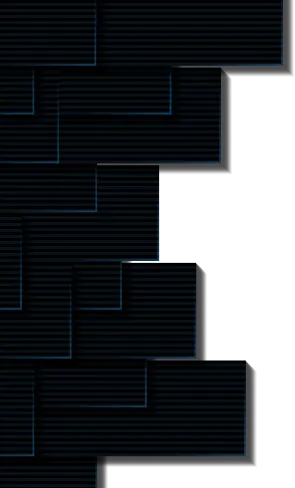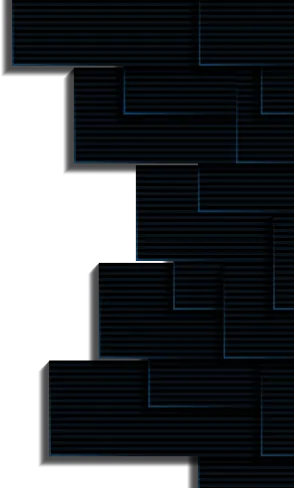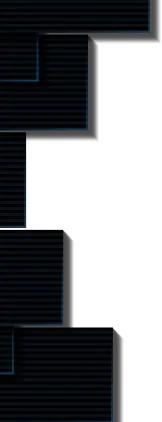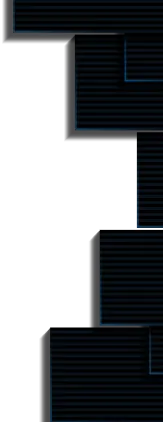What is The Sandbox?
Chahat

Blockchain-based gaming/metaverse is one of the most quickly developing areas in the blockchain. Remember CryptoKitties, the cat-breeding game that prompted Ethereum’s record-high gas fees in 2017? It was one of the first to use the Non-fungible token standard. Many NFT use-cases have evolved since then, but with considerably more complex features, game mechanics, and tokenomics. One such project is The Sandbox. Let’s take a look at what it is and how users may monetize their ‘property’ in the metaverse.
The Sandbox (A project by Animoca Brands) is best known for its two major mobile successes, The Sandbox (2011) and The Sandbox Evolution (2016), which earned a total of 40 million downloads across iOS and Android. Pixowl developed by Animoca Brands, a developer/publisher from mobile, chose in 2018 to bring its successful User Generated Content game IP and a big community of producers to the Blockchain environment.
The Sandbox platform is made up of three linked products (VoxEdit, Marketplace & Game Maker) that work together to give a full experience for producing user-generated content (UGC). Users will profit even more from the merged goods since they will be able to ensure copyright ownership for their user-created material using Blockchain and smart contracts.
How does The Sandbox work?
Adding a user-generated content ecosystem to the Blockchain is the beginning. They have developed three linked products and services to provide a comprehensive experience for user-generated content creation. Furthermore, using Blockchain technology and smart contracts, these solutions empower consumers by granting them copyright ownership of their material.
The Sandbox’s initial project is VoxEdit, a Voxel Editor that allows users to construct voxel models, rig them, and animate them. Users on Windows and Mac may begin making 3D things ranging from humans to vegetation, animals, and tools with this 3D modelling and NFT creation programme. Once constructed, the items may be exported from VoxEdit and utilised as in-game ASSETS in The Sandbox marketplace.
The Sandbox’s native marketplace is the second product. The NFT marketplace allows users to upload, publish, and sell their VoxEdit works. All uploads are routed over IPFS to provide decentralised storage and access. To verify ownership, that upload is logged on the Ethereum Blockchain. All creations that pass this procedure become assets that players may sell on the NFT marketplace via an initial selling offer.
The Sandbox Game Maker is the last but not least. Developers and fans who want to create 3D games may do it for free and without any coding knowledge. To build games in minutes, one may accomplish anything using a visual editor. Every new game adds to the metaverse’s ever-expanding collection of interactive creations and experiences.
Who created The Sandbox?
The Sandbox was created by Sebastian Borget and Arthur Madrid. Inside The Sandbox, users may develop, distribute, and monetize in-world goods and game experiences in this Ethereum-based metaverse and gaming environment. The Sandbox is intended to disrupt the existing metaverse/gaming industry in which platforms own and manage user-generated content, limiting the rights of artists and gamers. Users in The Sandbox have complete control over their in-world creations.
The Sandbox has been available for eight years as a virtual environment in which people may create, own, and sell their own voxel game experiences. The team’s goal is to provide a fully immersive metaverse in which virtual environments and games are built cooperatively and without central control.
History of The Sandbox
As we all know, the notion of sandbox-style gaming implies more-or-less undirected free-play. The metaphor is a kid playing in a sandbox, where the youngster creates a universe out of the sand, the most basic of materials. In contrast, the upper-level material in a game is completely developed and organized.
Many trends in free-play emerged in the interim years, the most popular of which was the city-building game. It all started with Utopia in 1982, but the city-building genre truly came into its own when it stopped being strategic/competitive and became an exercise in “free” construction for the sake of constructing.
The genre arose from the inherent enjoyment of creating game worlds, which is something that all game creators enjoy. Will Wright, one of the developers, felt it would be a good idea to convey this delight as directly as possible, and this insight led to the development of SimCity, which became a record-breaking success, establishing one of the 1990s’ major genres. This type of free play was sometimes combined with economic simulation, as in the Tycoon games, beginning with Railroad Tycoon (1990). Various more-or-less competition- and objective-oriented games, ranging from SimIsle to Capitalism, joined its ranks during the next decade (both 1995). Opening up game creation to the user, even to a limited extent, hailed current player-generated-content games like Second Life, LittleBigPlanet, and Spore.
Several researches were conducted in the 1990s to determine what gameplay structures and presentation/interface regimes enhance attachment, as well as what leverages the player’s inclination and desire to connect in an apparently meaningful way with the artificial character. These constantly literalize the game’s metaphor, bringing the player into the virtual realm and enmeshing him there: allowing “physical” touch (mouse-petting), sharing “space” (e.g., the player and the character can control the same on-screen items), and so on.
The major reason this tendency toward lifelike people is appealing for sandbox gaming is that the characters are more dynamic and interactable. They assist to “sell” the game environment by making it appear more lifelike. They’re not “realistic” in the sense that they can ever expect to pass the Turing test, but they’re realistic enough to make you forget about their artificiality. The more intelligently the NPCs interact, the more the game seems like it’s set in a free and open environment.
How to earn with SAND?
In the Sandbox ecosystem, there is a LAND token that symbolises parcels of land that you may own in the game. The problem is that it’s limited: there will never be more than 166K pieces of land in the Sandbox metaverse, even as the game’s popularity grows. Some fans believe it is a smart investment to purchase Property now — and later, when the demand for it increases, you may rent this land to game creators who want to create their games on this piece; stake LAND when it is possible; allow individuals to host their stores or galleries on your land, and so on. However, this should not be construed as investment advice. Nobody knows where the LAND price will go in the future or how profitable this investment will be. Conduct your own research to make informed and risk-averse judgments.
As the in-game money, $SAND is a utility token that allows users to purchase and sell LANDS and ASSETS in The Sandbox metaverse. It serves as the foundation for transactions and interactions, and it makes use of the ERC-20 token standard. There is a limited quantity of three billion $SAND tokens, which may be purchased on multiple exchanges such as Binance, Uniswap, Gemini, and others.
LANDS are an important part of The Sandbox Metaverse. Every LAND symbolises a piece of the globe that players may use to create and monetize experiences. There is a limited quantity of LAND available, with just 166,464 available. All LANDs can be used by players to host games, arrange multiplayer activities, build homes, or offer social events to the community.
Every ASSET in the game is a token that was produced by players using user-generated material. ASSETS can be traded on the built-in marketplace and are used as creative components in The Sandbox Game Maker.
What is the future of The Sandbox?
SAND conducted a mining event in July, which concluded in July; staking SAND for rewards is yet to be launched. However, as previously said, there is an intriguing way to generate money using Sandbox that is now available.
The Sandbox is set to debut its complete alpha for players in the second quarter, giving anybody access to a social centre and the ability to create a wonderful collection of fantasy and role-playing experiences that can be traded as NFTs with other players, producers, and artists on the site.
The Sandbox crew now numbers more than 100 individuals. The Sandbox is still on the Ethereum Blockchain, which has transaction fees. However, the business is developing a Layer 2 solution that may reduce transaction fees and speed up transactions.
Given how long The Sandbox has been around – the initial mobile app was published in 2011 – the Blockchain game has a devoted fan base. Its transition to Blockchain technology hasn’t hindered its development, and many people are taking note. Artists are developing specialized “voxel collections” of existing and forthcoming NFT collections, and new game ASSETS are released on a regular basis.
Furthermore, many individuals are only now becoming aware of this metaverse, and they buy LAND to contribute to the platform’s expansion of content and experiences. There is still a lot of room for development, but the biggest difficulty is attracting individuals who aren’t already involved in the blockchain ecosystem.
The Sandbox has drawn thousands of players due to its near-addictive gaming concept, accessible tools for creating within the metaverse, and profit potential. During the pandemic, the game gained a lot of traction: some players spent their entire lockdowns immersed in The Sandbox environment. The sense of ownership and freedom to create are what make the game so valuable.
Check out all Games & Collectibles dapps listed on The Dapp List.
Resources
https://www.gemini.com/cryptopedia/the-sandbox-sand-crypto-nft-virtual-world#section-how-to-generate-revenue-in-the-sandbox
https://www.kraken.com/en-gb/learn/what-is-sandbox-sand
https://medium.com/coinmonks/what-is-the-sandbox-nft-game-and-how-does-it-help-raise-money-2d3e962b365c
https://sandboxgame.gitbook.io/the-sandbox/





Subscribe to receive Alpha!
Join 4.3k subscribers from renowned companies worldwide and get a weekly update in your inbox. Stay updated on the latest and finest projects and product updates.

